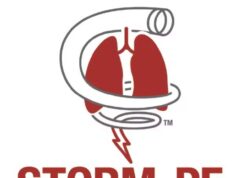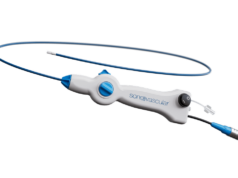This advertorial is sponsored by Penumbra, Inc.

Daniel Clair, MD, reflects on the STRIDE study of 30-day outcomes in patients who undergo first-line use of the Indigo Aspiration System and Lightning® (Penumbra) device portfolios for acute limb ischemia (ALI). He also weighs in on the growing weight of evidence in favor of percutaneous mechanical thrombectomy with the computer-assisted vacuum thrombectomy (CAVT™).
Labeling STRIDE “an effective limb salvage study of patients presenting with ALI,” Clair, chair of the Department of Vascular Surgery at Vanderbilt University Medical Center in Nashville, Tennessee, charts the move from open surgery to endovascular intervention, through thrombolysis and mechanical thrombectomy, and the emergence of CAVT’s suction technology.
Overall, says Clair, the effectiveness of CAVT is underscored by a “very low rate of embolization—a key benefit of using aspiration technology in the management of patients with ALI.”
What are the primary factors that have influenced your practice’s shift from traditional open surgical embolectomies to more endovascular interventions?
For most procedures that involve the vascular system, there is an understanding among vascular specialists—and vascular surgeons in particular—that minimally invasive techniques are easier and quicker for patients to recover from and, in most instances, they limit the impact of the procedure. In addition, historically, even through the 1990s, studies looking at thrombolysis alone have shown similar outcomes between patients who had an initial approach with minimally invasive technologies and procedures versus open surgical thrombectomy. Those data influence people extensively, and the fact there have been improvements with continued advancement in the mechanical thrombectomy world has made it even safer for these patients to have thrombus and embolic lesions treated with a primary approach that involves percutaneous mechanical thrombectomy.
How have improvements in percutaneous thrombectomy devices impacted the efficacy and safety of endovascular procedures compared to open surgery?
Without question, in the past this percutaneous approach involved the use of thrombolysis, but enhancement in aspiration technology—and mechanisms to apply that aspiration—to identify thrombus, and when the aspiration device is within the thrombus, has dramatically improved. It enhances the clot removal power while limiting the amount of blood loss that occurs.
What are the results of the STRIDE study showing and how are such data impacting patient selection and treatment planning?
STRIDE is an important study because, if you compare the historical outcomes of patients with ALI, the expected acute limb loss—that is within 30 days—is usually somewhere between 7–12%, or even 15%.1 And in the STRIDE study, that 30-day limb salvage was 98%.1 It is an effective limb salvage study for patients presenting with ALI. Even out to 12 months, the STRIDE data show limb salvage close to 90%.2 Right now, in our practice, the vast majority of patients who present with ALI are treated primarily with percutaneous approaches, and we think the aspiration technology is a very good way to deal with those patients and also enhance limb salvage rates—particularly in the periprocedural period.
Can you provide an overview of STRIDE II and how it differs from STRIDE?
STRIDE looked at 119 patients who presented with ALI. STRIDE II is an expansion of that population to 300 patients, with broader target vessel criteria, and will be done globally. It will incorporate an enhanced clot identification technology within the Lightning Bolt catheters. Within that 300-patient group, there will be a 50-patient subset where we will be looking at the use of this technology in previously stented or intervened-upon segments of the peripheral vasculature. That is important because, currently, there really is no well-studied mechanism to assess outcomes for percutaneous thrombectomy through areas of stenting.
In what ways does the use of CAVT contribute to a shift from open surgery to endovascular treatments?
For the vast majority of our patients with ALI, we see aspiration as great to use. We experience limited impact to the endothelium from these catheters because they are flexible and very compliant. The Bolt technology has a mechanism by which suction is rapidly modulated. This provides a benefit in that there is some disruption to the thrombus or embolus as we aspirate. It enhances the ability to break this clot up and bring it into the catheter. In many instances, we’re not using the addition of the clot disruptor [Separator] that comes with the catheter, just because of how effective the Bolt technology is on its own.
How is CAVT different from other endovascular technologies?
Other technologies involve application of a stent-like structure to the vessel wall to drag the thrombus back into a funnel. Those technologies are beneficial as well, but I would say there is an increased potential for vessel wall injury. The CAVT technology allows you to maintain wire access if need be and limits the amount of repeat interventions that we have had to do. This means that after 15–20 minutes of application, we’ve been able to clean out the clot enough to allow perfusion and retention of the limb with just anticoagulation after that.
How do you see the future of vascular surgery evolving as endovascular devices and techniques continue to advance?
I would venture to guess that we are going to see enhancements in, and application of, the aspiration technology in such a way that it will allow lengthy clot segments to be treated effectively, without the need for lysis at all. Right now, we are seeing the expansion of this application. One other area that, at times, is a struggle is dealing with chronic embolic material. But, here again, the use of modulated aspiration that comes with CAVT is very beneficial and has been helpful in breaking up these clots in the catheter. Advancements of these CAVT algorithms are going to be more helpful— even enhance the aspiration.
References
- Norgren L, Hiatt WR, Dormandy JA, et al. Inter-society consensus for the management of peripheral arterial disease (TASC II). J Vasc Surg. 2007;45(suppl S):S5-S67. doi: 10.1016/j.jvs.2006.12.037
- Maldonado TS, Powell A, Wendorff H. et al. One-year limb salvage and quality of life following mechanical aspiration thrombectomy in patients with acute lower extremity ischemia. J Vasc Surg. 2024; 80 1159-1168 E5
This interview was sponsored by Penumbra, Inc. Daniel Clair is a consultant for Penumbra.
Procedural and operative techniques and considerations are illustrative examples from physician experience. Physicians’ treatment and technique decisions will vary based on their medical judgment. The clinical results presented herein are for informational purposes only and may not be predictive for all patients. Individual results may vary depending on patient-specific attributes and other factors.
Caution: Federal (USA) law restricts these devices to sale by or on the order of a physician. Prior to use, please refer to the Instructions for Use for complete product indications, contraindications, warnings, precautions, potential adverse events, and detailed instructions for use. For the complete Penumbra IFU Summary Statements, please visit www.peninc.info/ risk. Please contact your local Penumbra representative for more information.












